Searching for the latest Hugging Face statistics?
Hugging Face is a platform for AI where users collaborate on machine learning projects. It hosts an open-source platform for training and deploying models. With over 200,000 models, it covers various fields like computer vision and natural language processing.
In this post, we will share all the important statistical data you need to learn more about Hugging Face.
Before we jump to the key statistics of Hugging Face, here’s a quick history of Hugging Face that you should not miss out on.
What is Hugging Face, Who Built It, Why, and When
Hugging Face, a French-American company headquartered in New York City, was established in 2016 by French entrepreneurs Clément Delangue, Julien Chaumond, and Thomas Wolf.
Initially, the company developed a chatbot app targeting teenagers before transitioning into a machine learning platform after open-sourcing the chatbot’s model.
The Hugging Face Hub, the company’s platform, acts as a collaborative space where users can develop, train, and deploy NLP and ML models using open-source code.
Hugging Face simplifies model development by providing pre-trained models that users can fine-tune for specific tasks, thus democratizing AI and making it more accessible to developers.
It offers user-friendly tokenizers for text preprocessing and a vast repository of NLP datasets through the Hugging Face Datasets library, supporting data scientists, researchers, and ML engineers in their projects.
Additionally, Hugging Face is renowned for its transformers library tailored for natural language processing applications.
What Does Hugging Face Mean, and Why Do They Use an Emoji?
“Hugging Face” was chosen because the founders wanted to be the first company to go public with an emoji rather than the traditional three-letter ticker symbol.

They chose the hugging face emoji because it was their favorite emoji, and they thought it would be a memorable and unique name for their company.
Well, this went well and the Hugging Face community has embraced the name, and it has become a recognizable brand in the machine learning and data science space.
Key Hugging Face Statistics at Glance
Website Traffic and User Demographics
How Much Website Traffic Hugging Face Attracts?
Hugging Face, a prominent AI platform and community, has maintained consistent traffic levels recently.
In January 2024, the website attracted 28.81 million visits, with users spending an average of 10 minutes and 39 seconds per session. However, there was a slight decrease in traffic compared to November, amounting to -19.5%.


The primary audience for Hugging Face is centered in the United States, with significant followings in Russia, India, Japan, and Indonesia.


Traffic to the website is diverse in terms of device usage, with desktops representing 68.03% of visits, followed by mobile devices at 31.97%, and tablets at 7.22%. (Some data about device usage varies; however, it’s somewhere around 70-75% for Desktop.)
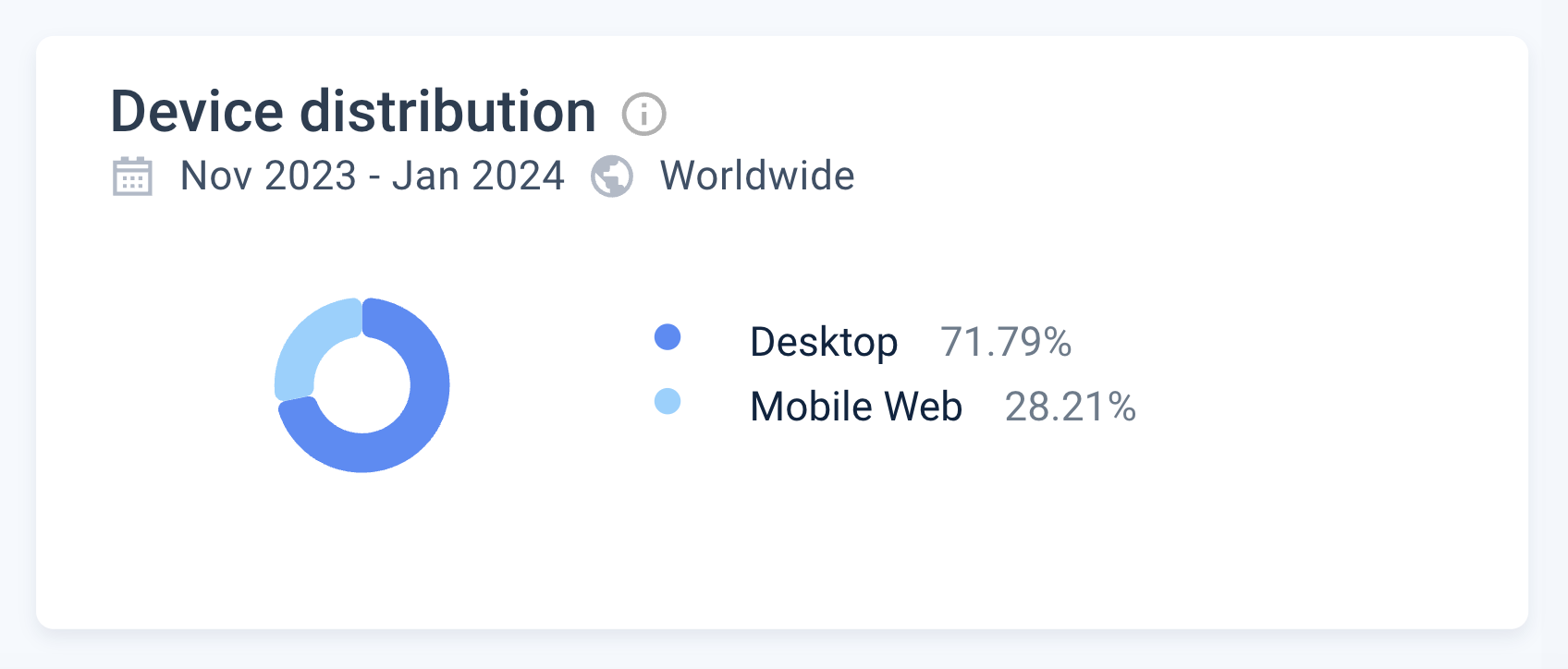

In terms of marketing channels, direct traffic holds the largest share at 45.06%, closely followed by organic search at 28.67%. Referrals, social media, display ads, and paid searches comprise the remainder of the website’s traffic sources.
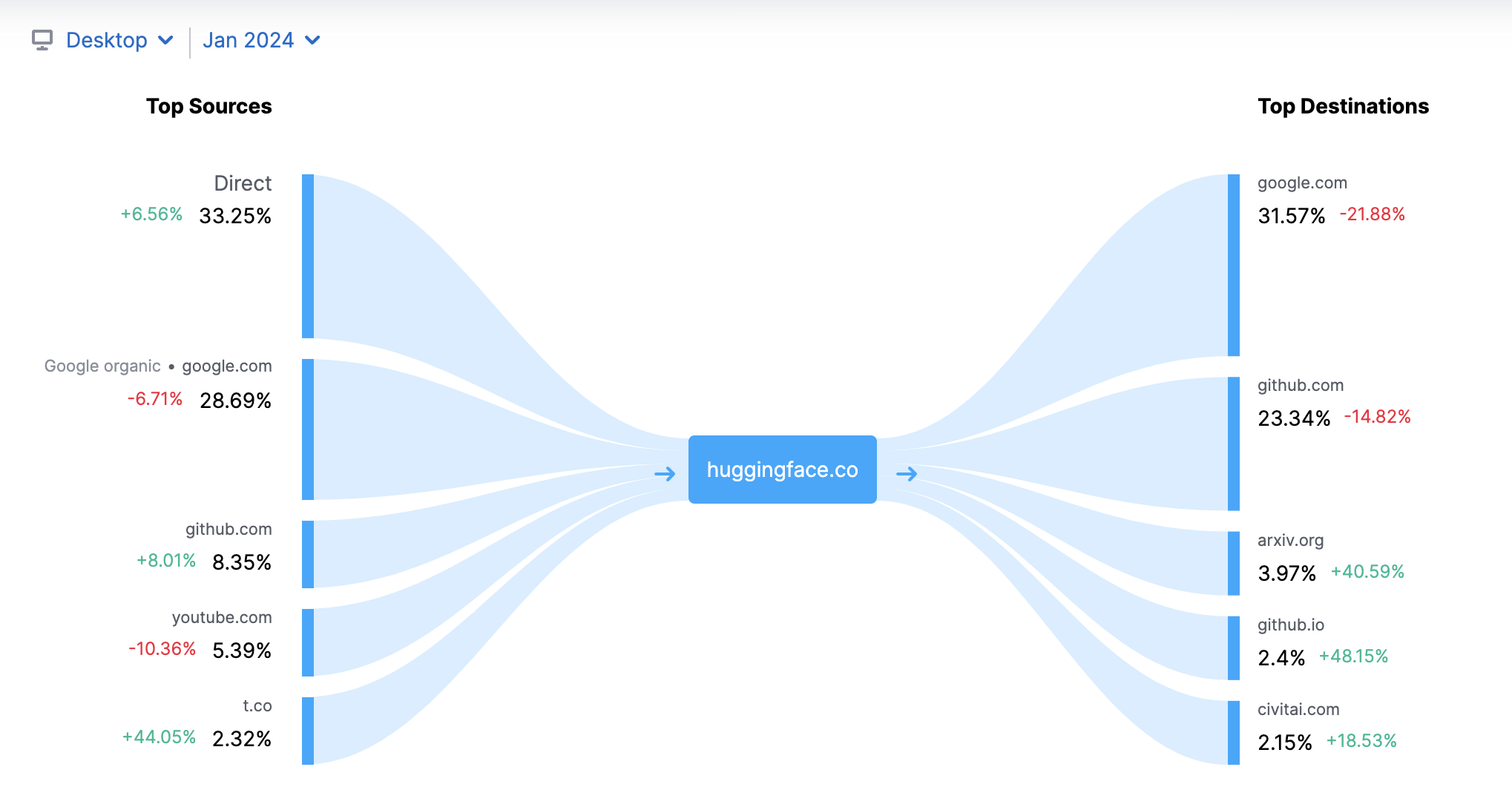

What is the User Base of Hugging Face?
Hugging Face attracts a diverse user base consisting mainly of AI researchers, data scientists, and developers.
As of 2023, the platform boasts more than 1.2 million registered users, with males making up 75.25% and females 24.75% of the total.
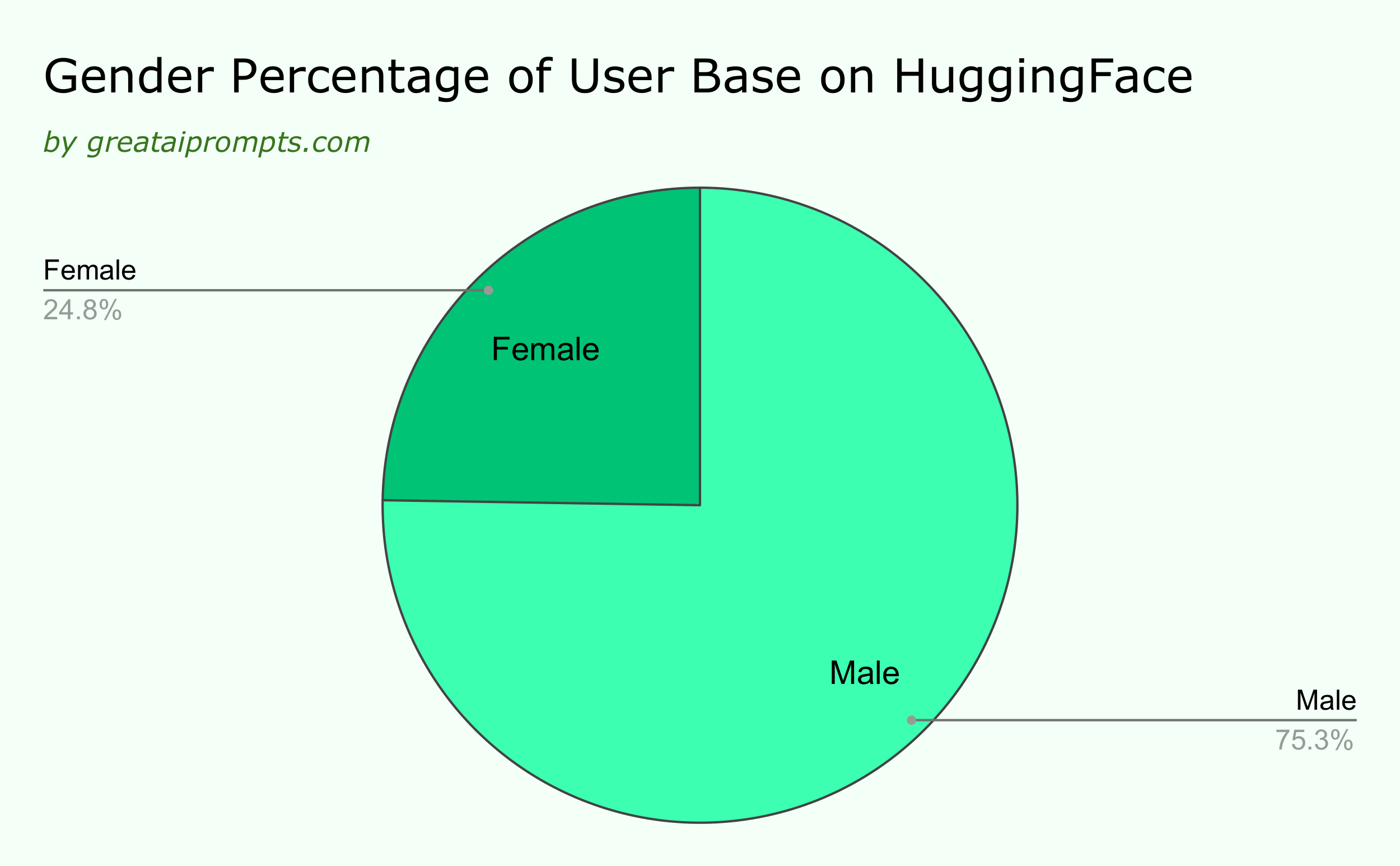

Most users fall within the 25-34 age bracket, accounting for 36.87% of the user base, closely followed by 18-24-year-olds at 28.26%. In total, users aged 18-44 make up 83.03% of the platform’s users.
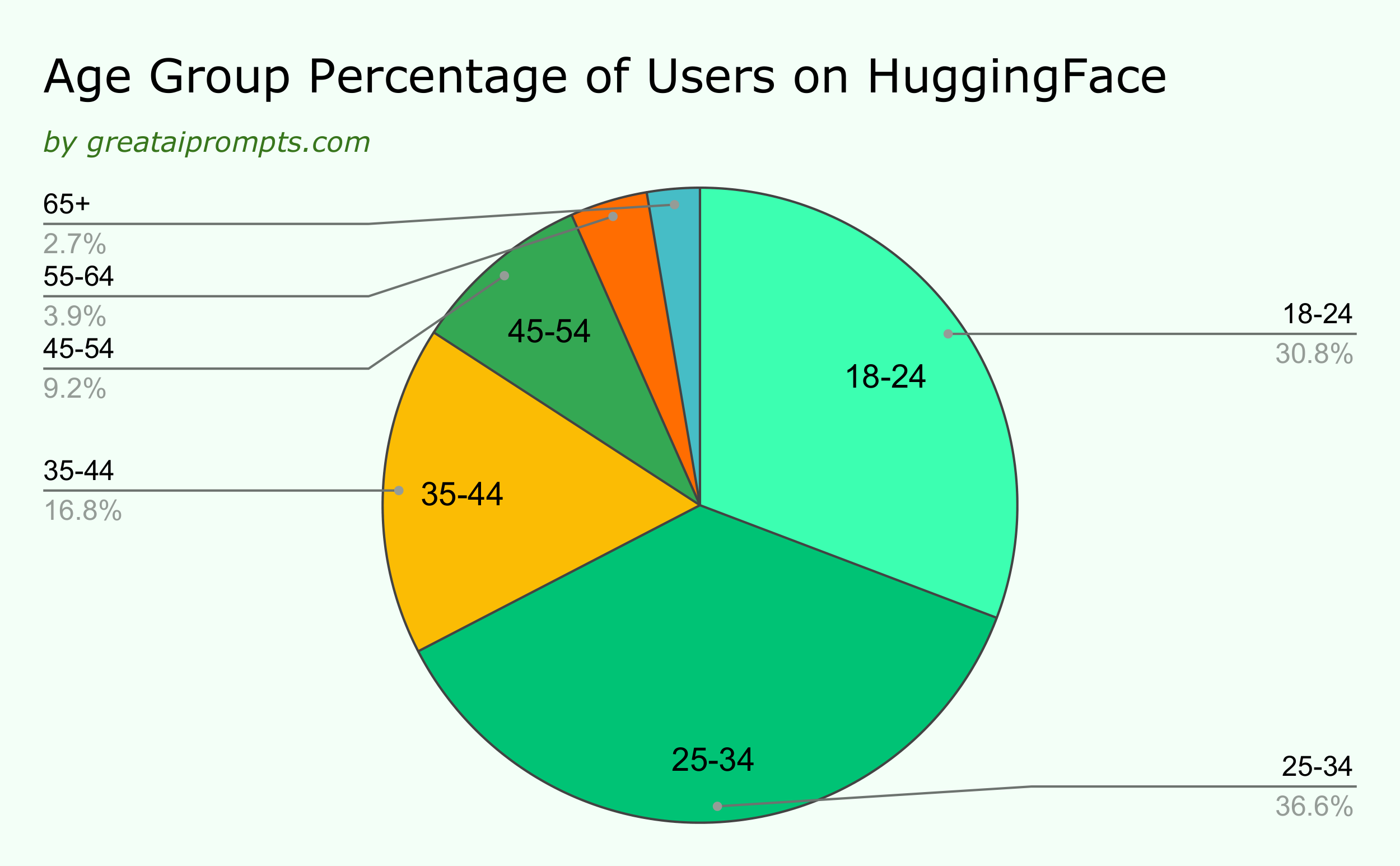

Active Paying Users on Hugging Face
Hugging Face boasts more than 1,000 active paying users, which include prominent firms such as Intel, Pfizer, Bloomberg, and eBay. By 2025, Hugging Face’s projected active paying user base will increase by nearly 1500.
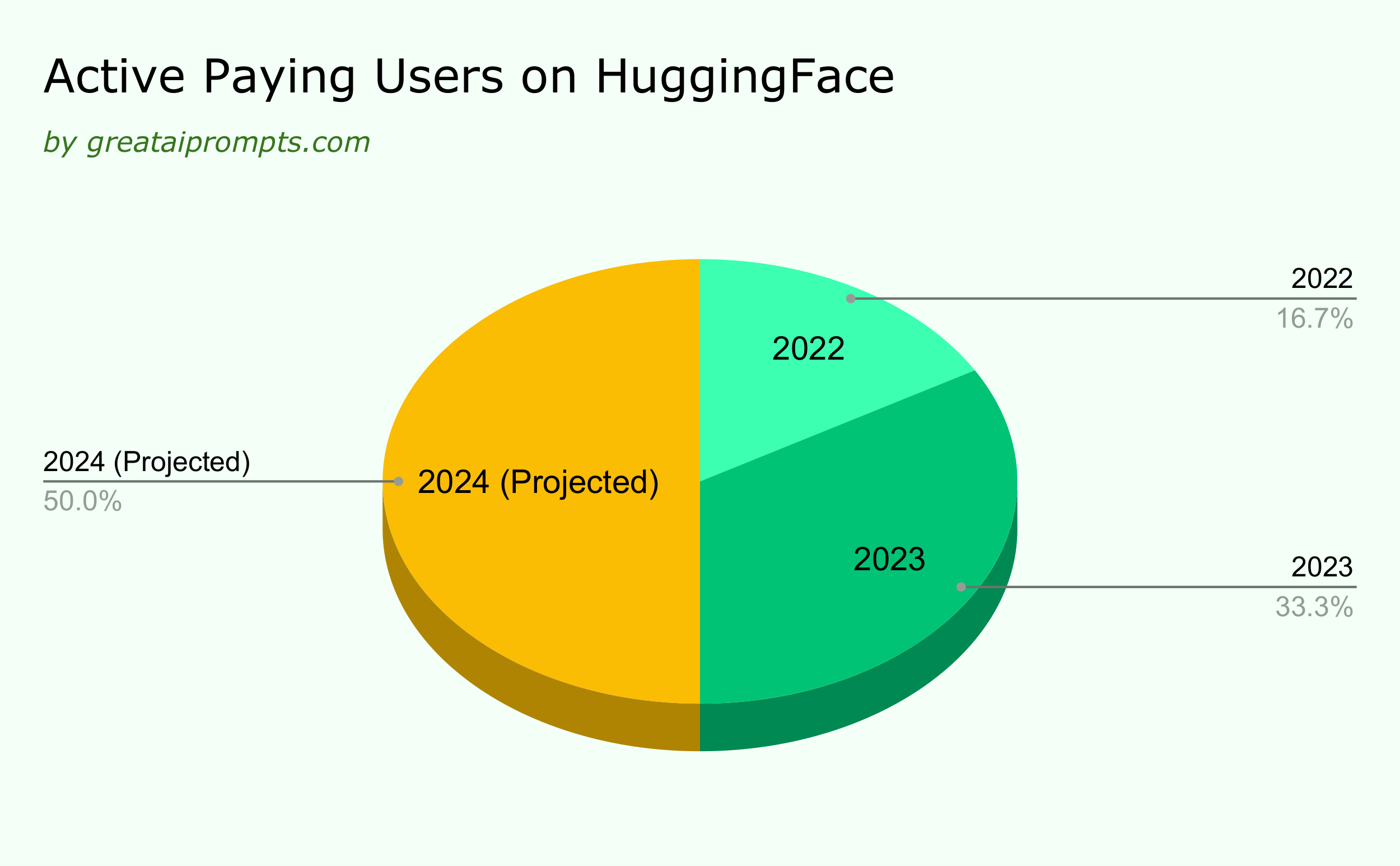

The platform provides services like AutoTrain, Spaces, and Inference Endpoints, with charges billed directly to the linked credit card.
Moreover, Hugging Face collaborates with cloud providers like AWS and Azure to enable seamless integration into customers’ preferred cloud setups.
Geographical Distribution of Hugging Face
Hugging Face attracts users from diverse geographical locations, with the United States, India, and Russia emerging as pivotal hubs for its core audience.
Analyzing website traffic, it’s evident that the United States comprises 25.06% of visitors, trailed by India at 10.44%, and Russia at 7.06%.
| Country | All Devices | Desktop | Mobile |
|---|---|---|---|
| United States | 6.61M | 68.35% | 31.65% |
| Russian Federation | 1.64M | 50.87% | 49.13% |
| India | 1.62M | 73.01% | 26.99% |
| Japan | 1.54M | 71.76% | 28.24% |
| Indonesia | 1.23M | 19.54% | 80.46% |
Interestingly, device preferences vary across regions, with desktop usage dominating in the United States (68.03%), while mobile devices are favored in India (92.28%) and Russia (86.48%).
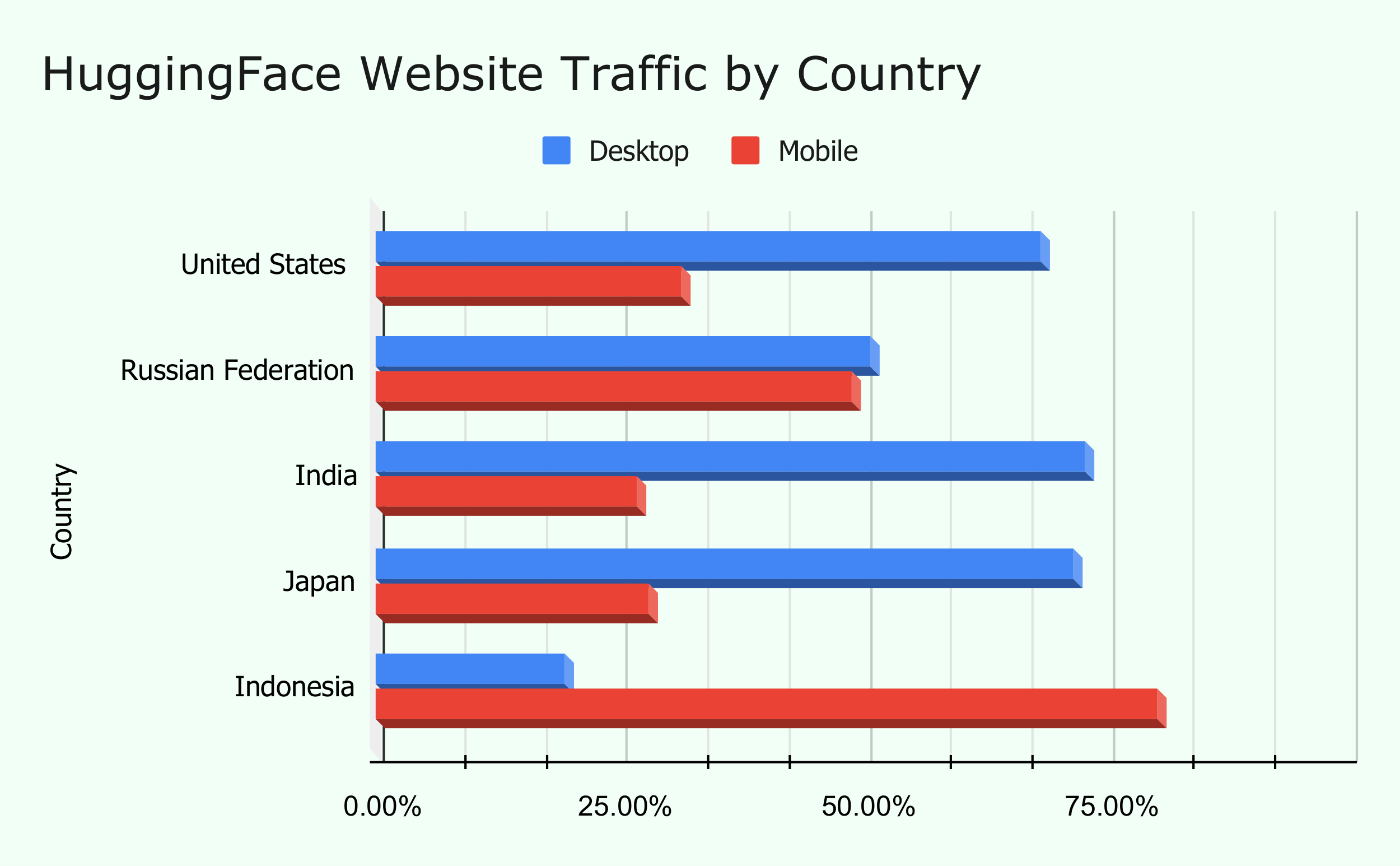

Average Time Users Spend on Hugging Face
Users spend an average of 4 minutes and 59 seconds on the Hugging Face website, which is quite low compared to OpenAI’s ChatGPT, Character AI, Claude, or Bing AI.
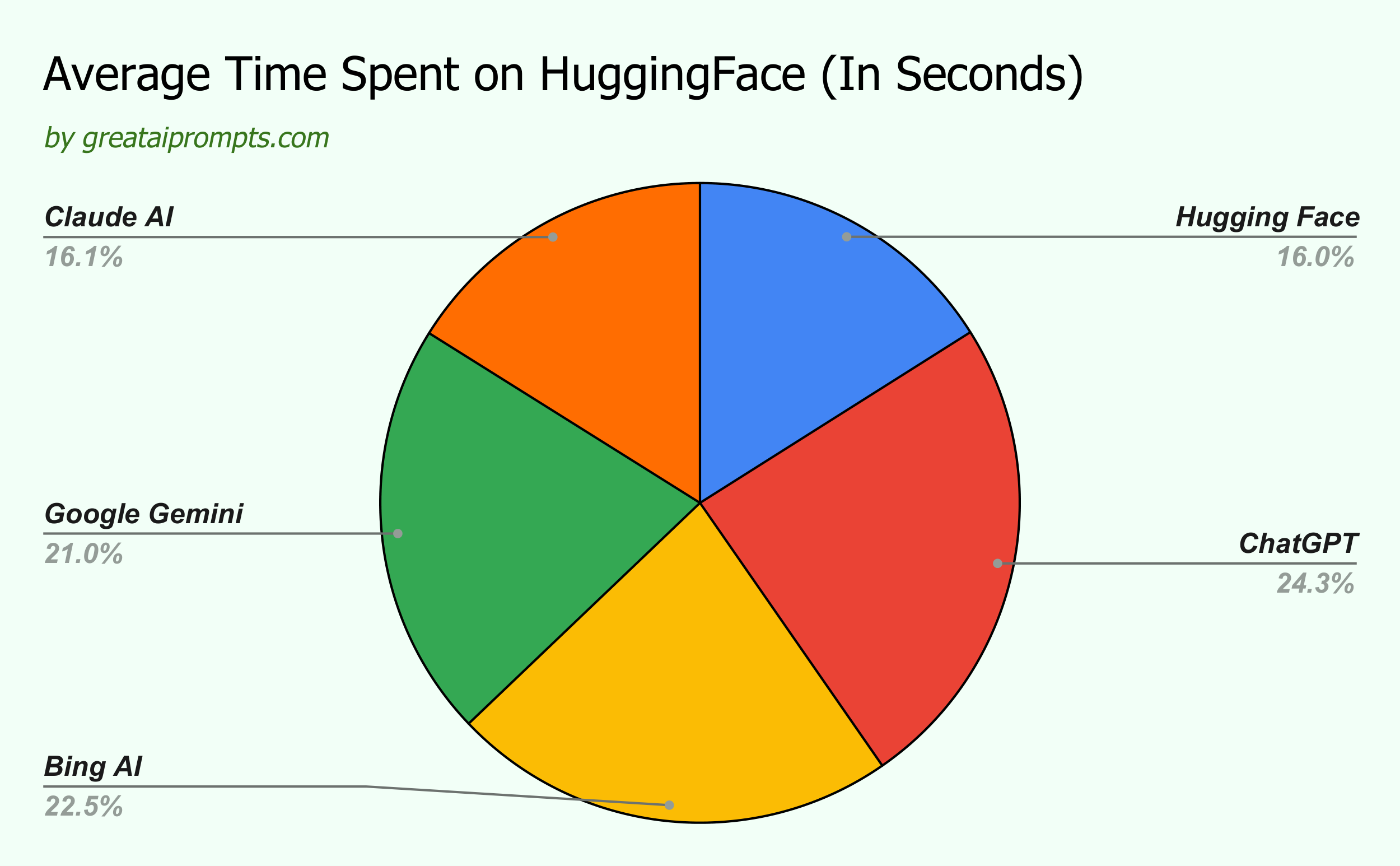

Funding and Valuation Statistics
Now, let’s look at some of Hugging Face’s key funding, revenue, and valuation statistics.
Revenue and Valuation
According to estimates from Sacra, Hugging Face achieved $70 million in annual recurring revenue (ARR) by the end of 2023, showing an impressive 367% growth compared to the previous year.
This surge in revenue was mainly due to profitable consulting contracts with major AI companies like Nvidia, Amazon, and Microsoft. The company’s revenue model includes paid individual ($9/month) and team plans ($20/month), with a significant portion of revenue coming from enterprise-level services.
Regarding valuation, Hugging Face reached a valuation of $4.5 billion after securing $235 million in funding from investors such as Google, Amazon, Nvidia, Intel, Salesforce, and others.
This substantial valuation demonstrates the market’s confidence in Hugging Face’s innovative AI software solutions and hosting services.
| Metric | Value |
|---|---|
| Revenue (2021) | $10 million |
| Valuation (May 2022) | $2 billion |
| Latest Valuation (August 2023) | $4.5 billion |
| Total Funding | $235 million |
Funding
As of 2023, Hugging Face has successfully raised $395 million in funding. This funding has been crucial in supporting the company’s growth initiatives, product development, and expansion into new markets.
Notable investors like Google, Nvidia, and other tech giants have expressed strong support for Hugging Face’s vision and offerings.
Does Hugging Face Make Money?
In 2023, Hugging Face reached an annual recurring revenue (ARR) of $70 million, showing a remarkable 367% increase from the previous year.
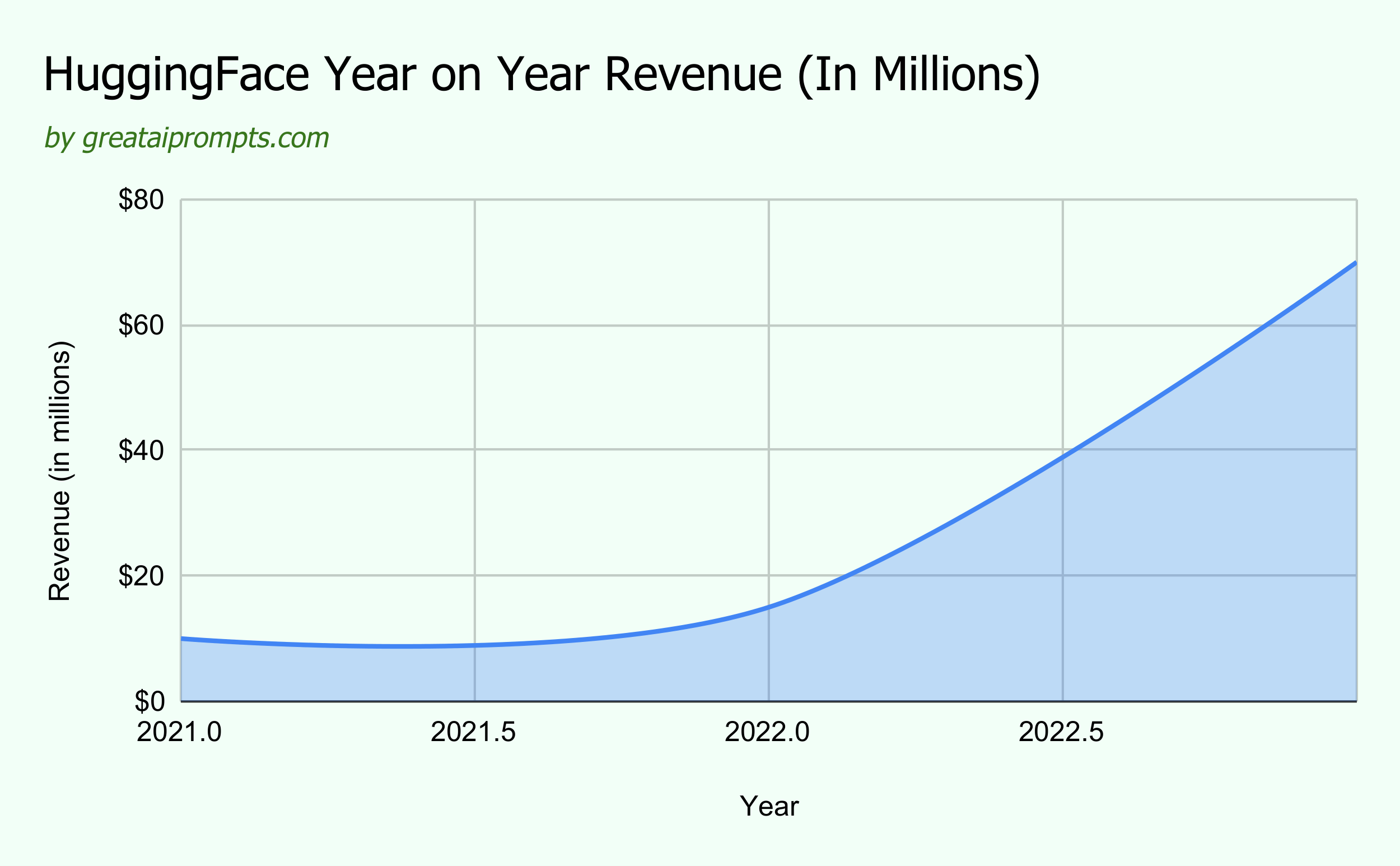

This surge in revenue was mainly driven by lucrative consulting contracts with leading AI companies such as Nvidia, Amazon, and Microsoft.
Here are the company’s revenue statistics:
| Year | Revenue (ARR) | Growth Rate (y/y) |
|---|---|---|
| 2022 | $10 million | N/A |
| 2023 | $70 million | 367% |
How Hugging Face Makes Money (Revenue Model)
Hugging Face generates revenue through various channels, including subscription plans, enterprise solutions, and cloud services. Here’s a breakdown of how Hugging Face earns money:
- Subscription Plans:
- Hugging Face offers both individual and team subscription plans priced at $9 per month and $20 per month, respectively.
- These plans grant users access to premium features like private dataset viewing, inference capabilities, and early access to new features.
- Enterprise Solutions:
- Cloud Services:
- Through its cloud platform, Hugging Face offers NLP and AI services such as model hosting, inference, and optimization.
- Users are billed based on their usage of these services, including fees for model hosting and optimization.
- Market Positioning:
Market Position and Competition
Direct and Indirect Competitors
Hugging Face competes in the rapidly growing generative AI market, particularly in large language and vision models.
It is not a direct competitor to ChatGPT or Google’s Bard but competes through strategic partnerships and the commercialization of AI models for enterprise use.
For instance, Hugging Face’s collaboration with AWS aims to make deploying generative AI applications more accessible to developers.
Based on the data from Similarweb, here’s a table outlining Hugging Face’s top competitors, their industry focus, and the total visits they received in December 2023:
| Rank | Competitor | Industry Focus | Total Visits (December 2023) | Global Rank |
|---|---|---|---|---|
| 1 | paperswithcode.com | Machine learning research and implementation | 2.2M | #29,926 |
| 2 | openai.com | Advanced AI systems (GPT-4) | 1.6B | #25 |
| 3 | civitai.com | Stable diffusion AI art models | 24.2M | #1,301 |
| 4 | wandb.ai | Machine learning model tracking and comparison | 1.6M | #32,001 |
| 5 | github.com | Software development and open source collaboration | 424.8M | #78 |
| 6 | raw.githubusercontent.com | – | 7.7M | #11,474 |
| 7 | stablediffusionweb.com | Stable diffusion online demo for art creation | 3.5M | #19,080 |
| 8 | notion.so | Workspace productivity tools | 141.2M | #200 |
| 9 | replicate.com | Cloud API for machine learning models | 7.7M | #7,370 |
| 10 | stability.ai | AI technology development | 3.5M | #19,790 |
Ways Hugging Face Differentiates Itself from Competitors
Other Important Statistical Data for Hugging Face
There are many other statistics you need to know about Hugging Face other than traffic, revenue, demographics, etc. Let’s have a look at them:
What Products Hugging Face Has Built?
In 2020, they introduced products like Autotrain and Inference API, targeting enterprise clients.
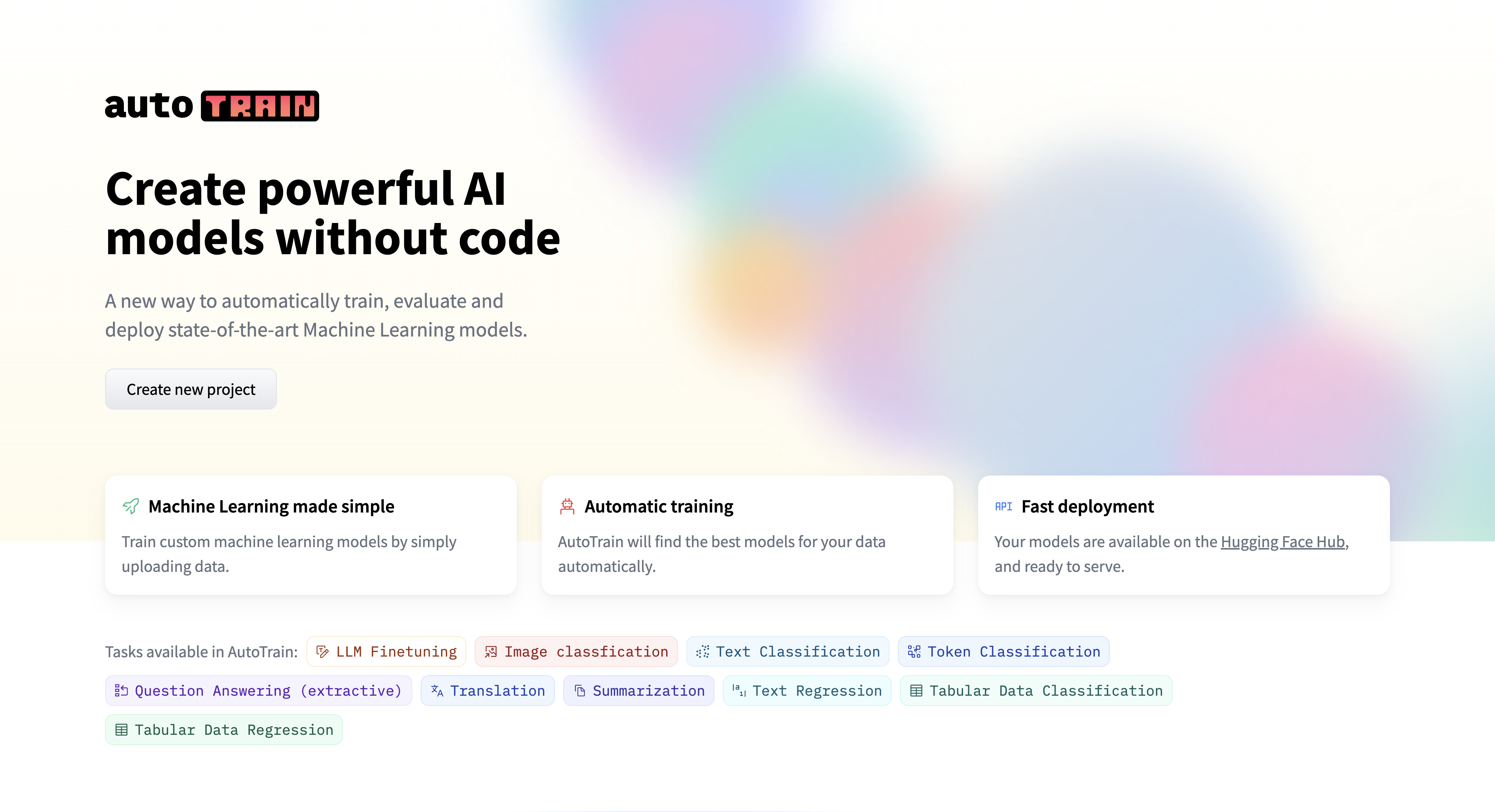

In April 2023, they launched HuggingChat, an open-source generative AI.
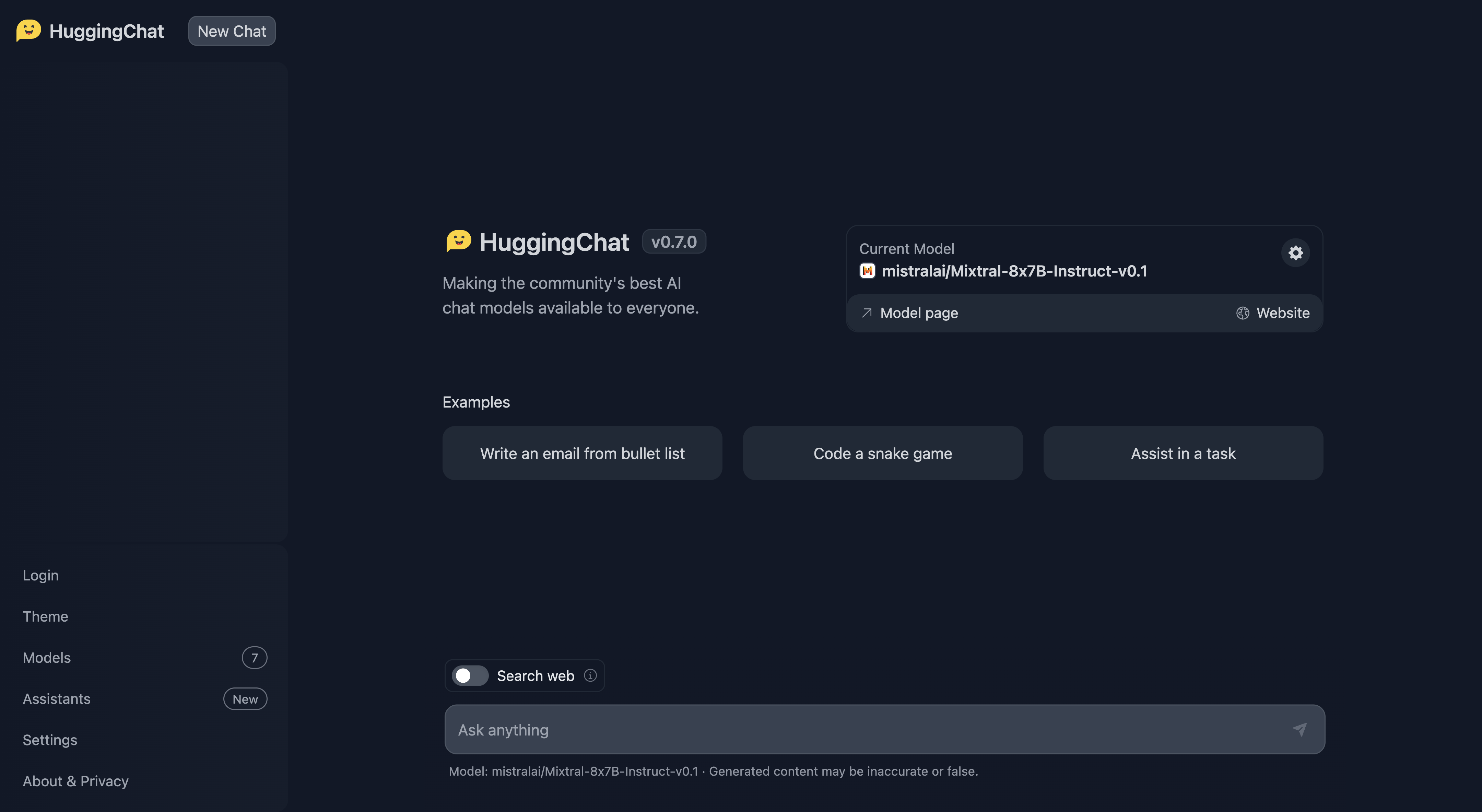

Their notable project, BLOOM, a 176 billion parameter large language model, was released in July 2022, showing their commitment to large language models. BLOOM, similar to GPT-3, supports multiple languages and programming languages.
Hugging Face also offers autoML solutions and the Hugging Face Hub platform for hosting code repositories and discussions.
Their NLP library aims to democratize NLP by providing datasets and tools. Popular among big tech companies, Hugging Face manages BigScience, a research initiative with 900 researchers training models on a massive multilingual dataset.
Models like BERT and DistilBERT see significant weekly downloads, and StarCoder, their AI coding assistant, supports 80 programming languages.
Collaborating with AWS, Hugging Face offers Deep Learning Containers for NLP model deployment on Amazon SageMaker.
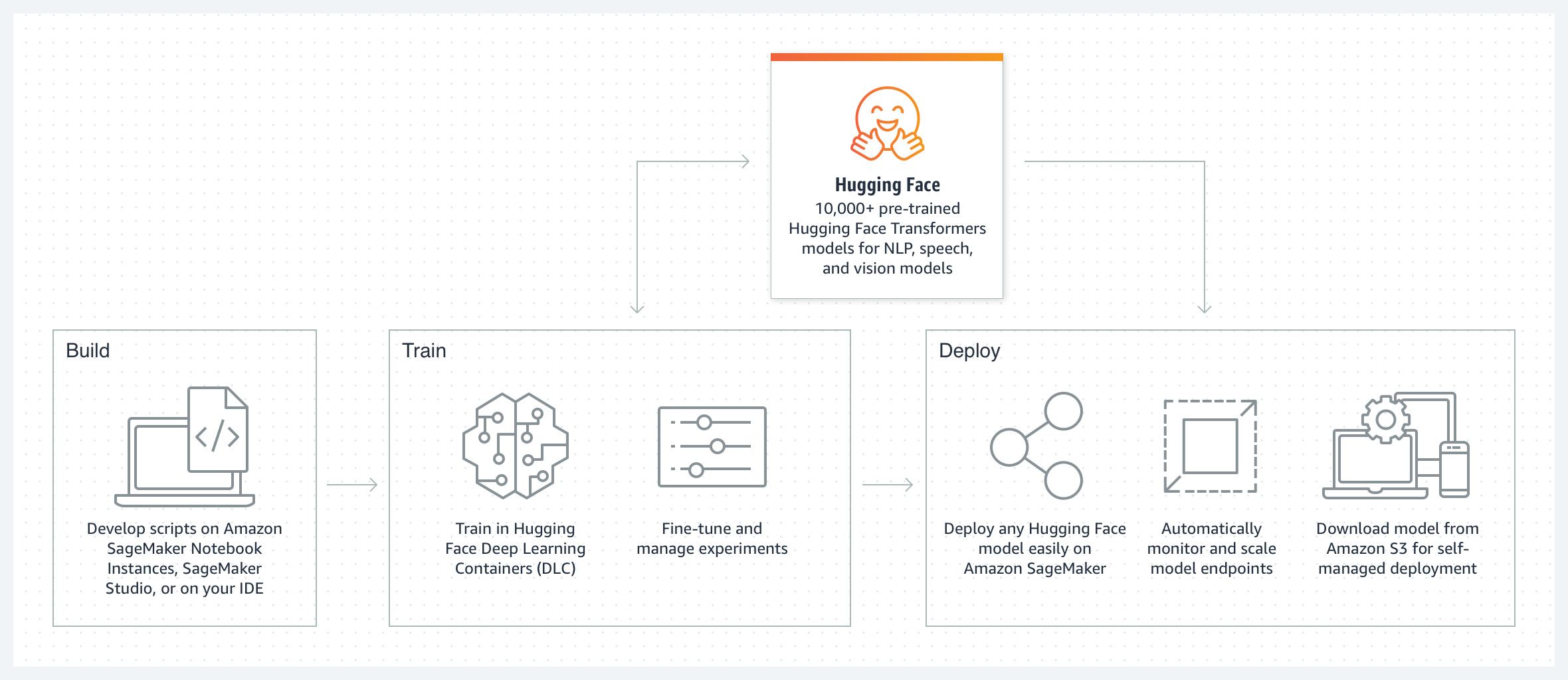

How Many Models and Datasets Are Hosted by Hugging Face?
With over 300,000 models, 250,000 datasets, and 250,000 spaces, it provides the most extensive collection available.
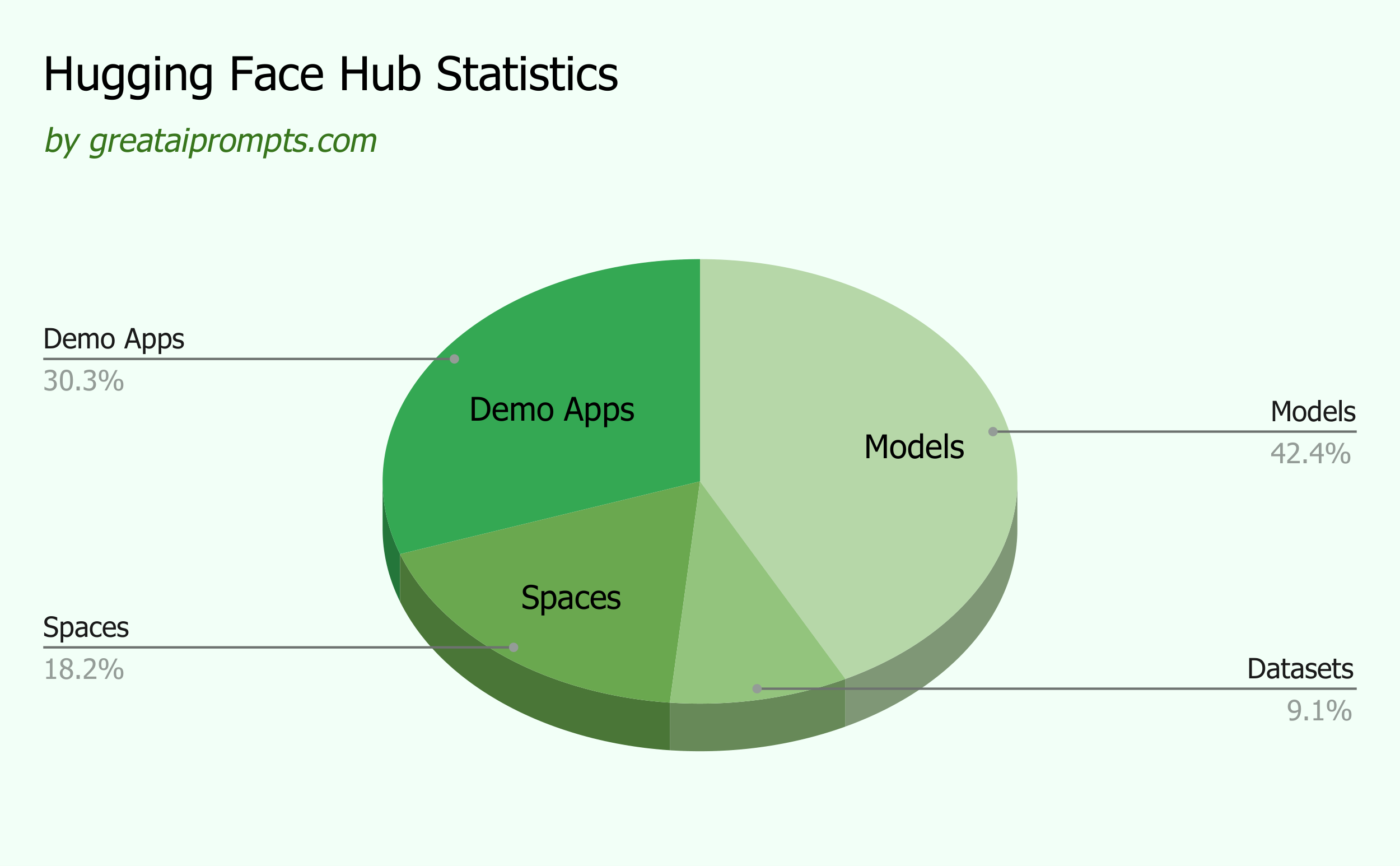

The Hugging Face Hub hosts over 350,000 models, 75,000 datasets, and 150,000 demo apps, fostering collaboration and innovation. With support for over 130 architectures and more than 75,000 datasets in over 100 languages, users have access to a diverse range of resources.
Additionally, Hugging Face hosts popular machine-learning models like BERT and GPT-2, along with a Metrics library for evaluating model predictions.
Hugging Face Employee Data
Hugging Face has grown its workforce to 279 employees, marking a notable 39% increase over the last year, signaling significant expansion.
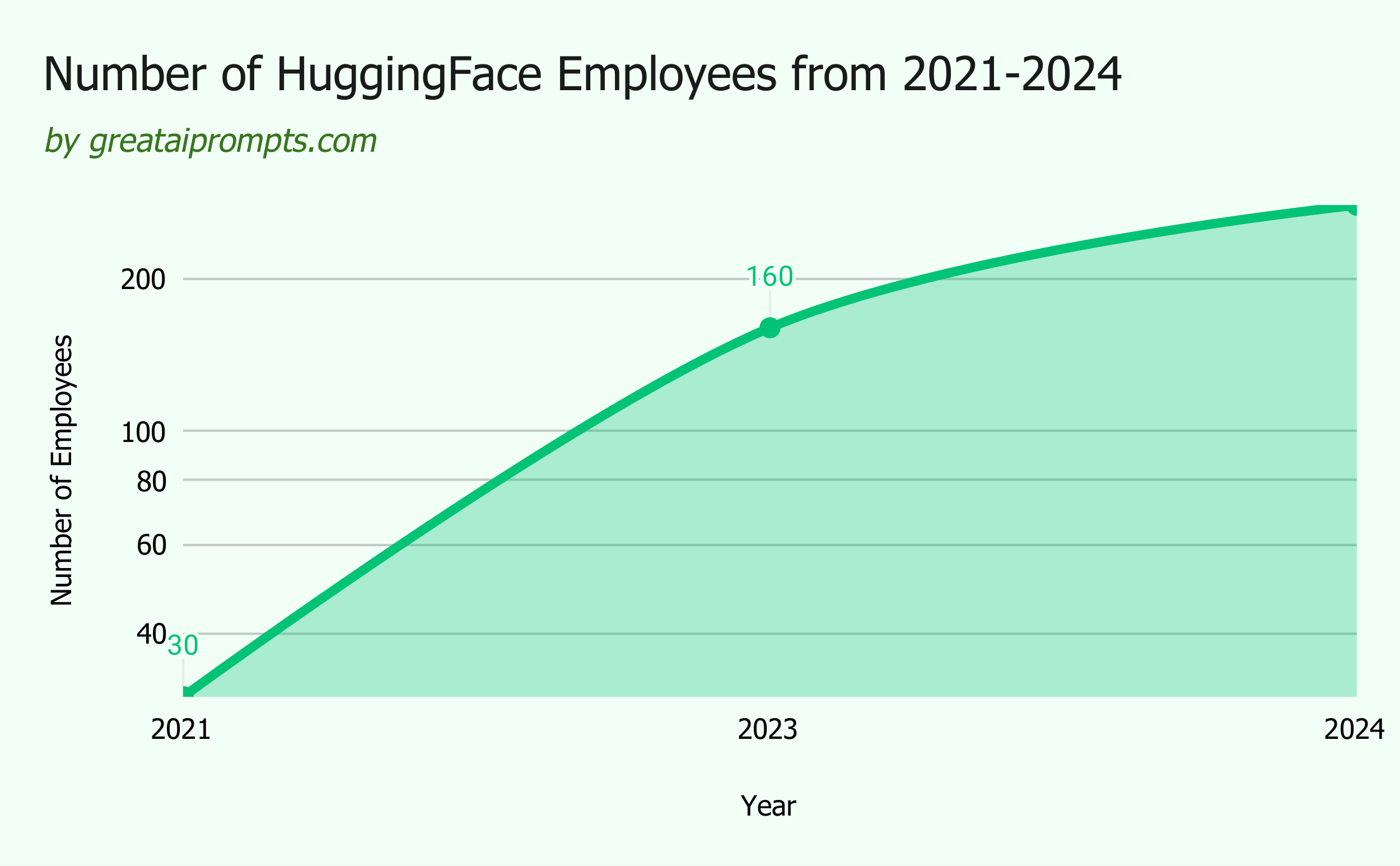

With an estimated annual revenue of $40 million, the company’s revenue per employee is approximately $143,487.
Furthermore, Hugging Face has raised a total of $235 million in funding and currently holds a valuation of $4 billion as of August 2023.
Here is a table summarizing the employee data statistics for Hugging Face:
| Metric | Value |
|---|---|
| Number of Employees | 279 |
| Employee Growth | 39% |
| Estimated Annual Revenue | $40 million |
| Revenue per Employee | $143,487 |
| Total Funding | $235 million |
| Valuation | $4 billion |
How Many Stars Does Hugging Face Has on GitHub?
Hugging Face has a substantial number of stars on GitHub indicating its popularity and community engagement.
Hugging Face’s Transformers tool has 121,000 stars on GitHub, often seen as a measure of success for developer tools.
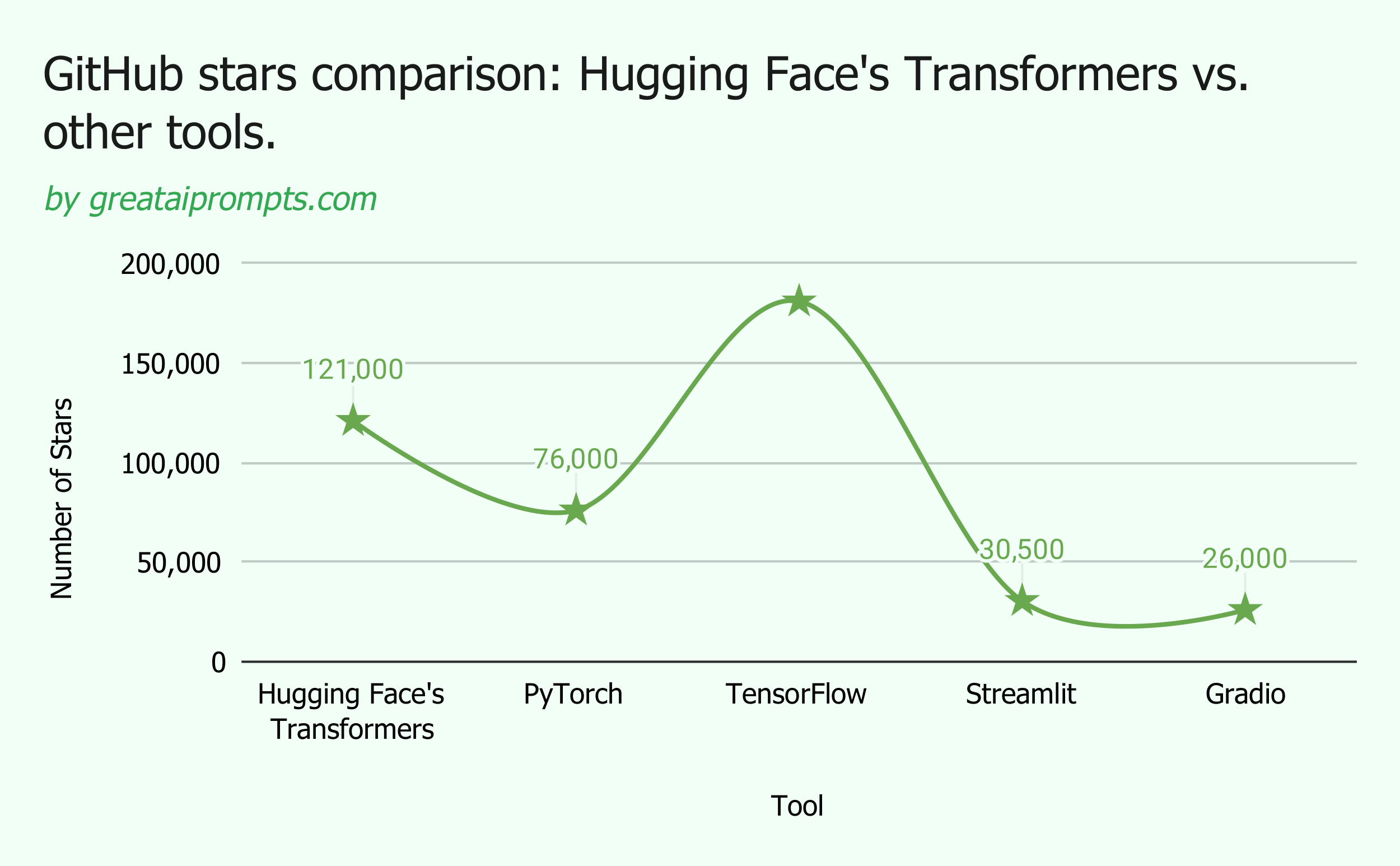

For comparison, PyTorch, Meta’s popular machine-learning framework, has 76,000 stars, and Google’s TensorFlow has 181,000 stars. Snowflake’s Streamlit has 30,500 stars compared to Gradio’s 26,000.
And That’s a Wrap
Here are all the essential statistics you required about Hugging Face.
The remarkable growth of Hugging Face, particularly with their innovative AI models and collaborative platform, is truly impressive.
Now, over to you:
Will Hugging Face sustain this rapid growth momentum? Do you anticipate continued expansion from Hugging Face in the future?
If you have any further inquiries or thoughts on this topic, please feel free to share them in the comments below.
Let’s engage in a discussion about it.


